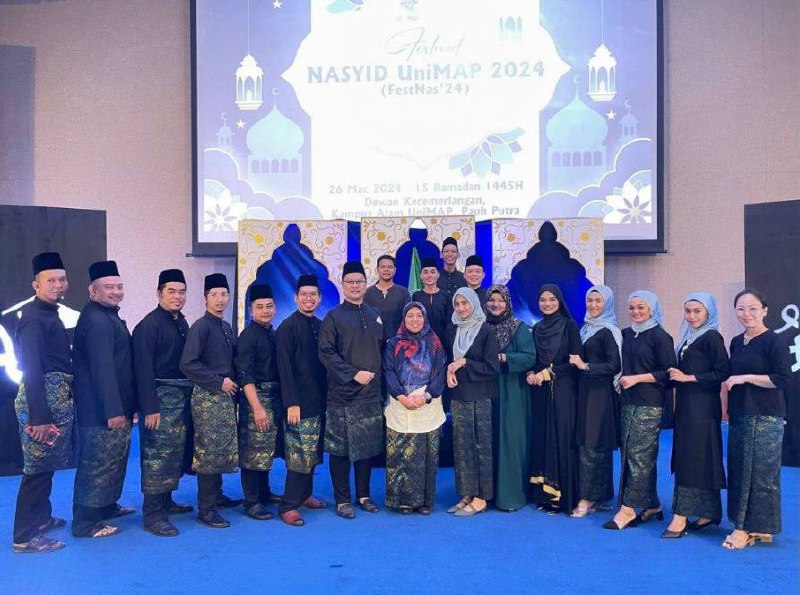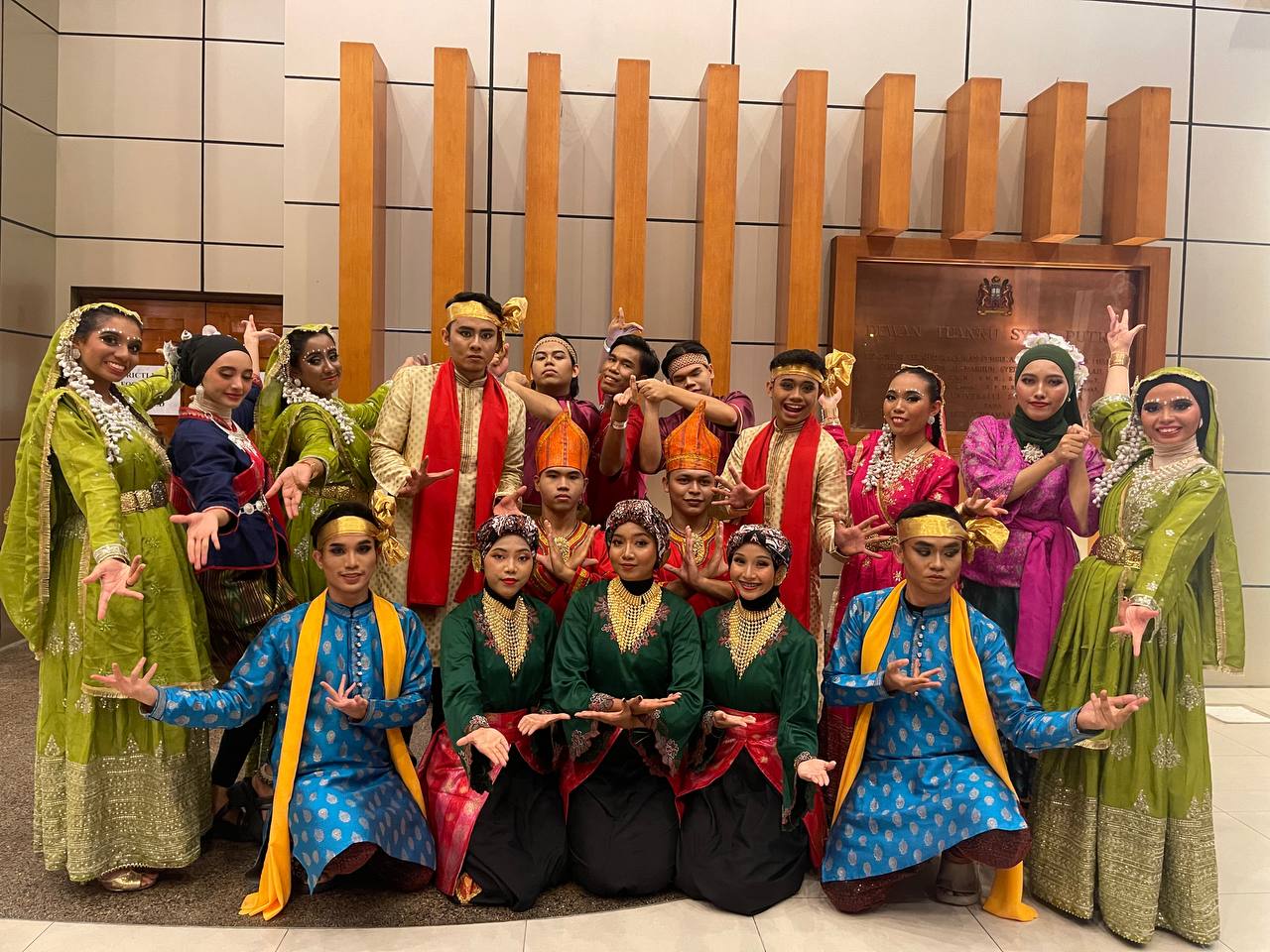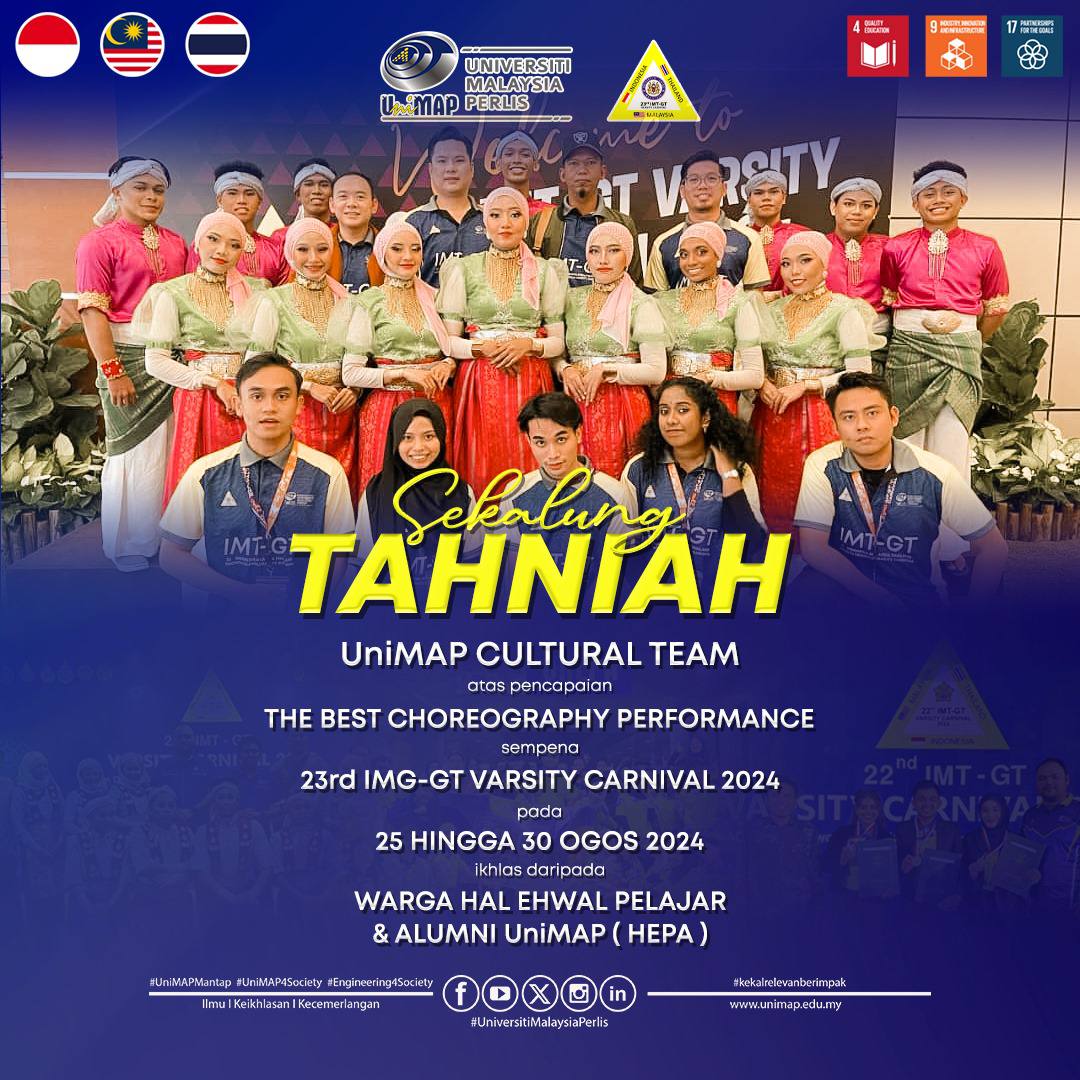welcome to the official website of
Universiti Malaysia Perlis Cultural Centre
"Art and culture complement each other. Art without culture will be flawed, and will not be beautiful,”
- Prof. Mohd Nasir (Dewan Budaya)




HIGHLIGHTS


Dr. Mahyun Binti Ab Wahab
Director of UniMAP Cultural Centre

Welcoming Note
"Salam Budaya, Lestari Budayaku..."
السلام عليكم ورحمة الله وبركاته
and greetings to all,
Welcome to the official website of the Cultural Center, Universiti Malaysia Perlis (UniMAP). It is my great pleasure to extend my warmest greetings to students, staff, alumni, and visitors who share a passion for arts, culture, and heritage.
At UniMAP, we recognize the profound role that culture plays in shaping identities, fostering unity, and enriching academic life. The Cultural Center is dedicated to celebrating and preserving Malaysia’s diverse cultural heritage while embracing global artistic expressions. Through a wide range of programs, performances, and collaborations, we aim to create a vibrant cultural ecosystem that inspires creativity, encourages dialogue, and nurtures talent.
Our center serves as a hub for cultural exchange, offering opportunities for students and the university community to engage in traditional and contemporary artistic endeavors. Whether through music, dance, theater, literature, or visual arts, we strive to cultivate an environment where cultural appreciation and artistic excellence flourish.
We invite you to explore our website to discover upcoming events, ongoing projects, and various avenues for participation. We welcome collaborations with institutions, artists, and cultural enthusiasts who share our vision of promoting cultural understanding and artistic innovation.
Thank you for visiting, and we look forward to your support in making the Cultural Center a beacon of artistic and cultural excellence at UniMAP.
Warm regards,
Dr Mahyun Ab Wahab
Director,
Cultural Center Universiti Malaysia Perlis
UniMAP Cultural Centre has been established since 2005




Cultural Clubs

Services Provided
Cultural Performance (Band | Dance)
Costumes & Accessories Rental
Music Studio Rental
Musical Instrument Rental
News & Articles
Our Recent Achievements

1
Winner and 3rd Runner-Up for Canggung Hybrid Comp
The Universiti Malaysia Perlis Cultural Center continues to excel in the Kemuncak Canggung Hibrid Competition, when it emerged the champion and fourth place for the hybrid awkward summit competition at the Perlis JKKN Complex Auditorium on 4 May 2024.



2
Best Choreography Performance for IMT-GT 2024
Universiti Malaysia Perlis has participated in the 23rd Indonesia Malaysia Thailand Growth Triangle Carnival (IMT-GT 2024) on August 25 to 30 held at Universiti Sains Malaysia Perlis. This carnival involves the participation of university representatives from Malaysia, Thailand, and Indonesia.

3
Winner and 2nd Runner-Up for Pertandingan Akhir Bintang Asli Remaja (State)
PKBU - Two students from the EngMusc Cultural Club achieved outstanding success in the 2024 Youth Asli Star Finals at the Perlis State Level.
.png)
Our Team
Our Top Management

Libren Anak Francis Doublin
Senior Cultural Officer B10

Alis Suraya Binti Shaharim
Cultural Officer B9

Terry Junas
Cultural Artist B5

Caroline Binti Taimin
Cultural Officer B6


